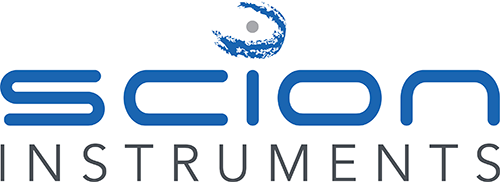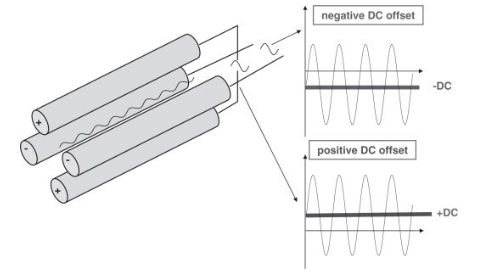Mass Spec Overview: TQ vs. SQ
What Is a Quadrupole Mass Spectrometer?
Quadrupoles, or “quads,” play a crucial role in mass spectrometry. These four cylindrical rods, powered by direct current (DC) and radio frequency (RF) voltages, significantly enhance analytical sensitivity and selectivity.
In a quadrupole mass spectrometer (MS), the rods create an electric field that allows only ions with a specific mass-to-charge ratio (m/z) to pass through. By adjusting the RF and DC voltages, users can selectively transmit target ions, making quadrupoles highly effective for isolating analytes.
Beyond mass filtering, quadrupoles improve ion transmission by capturing and transferring ions with minimal loss. They also function as collision cells, breaking down ions into smaller fragments for detailed analysis.
These capabilities make quadrupoles essential in modern mass spectrometry. They operate as mass analyzers, transmission elements, and collision cells, offering unmatched sensitivity and adaptability. This guide compares single and triple quadrupole mass spectrometers (TQ-MS) and explains when each is most effective.
Difference Between Single and Triple Quadrupole MS
A Single Quadrupole Mass Spectrometer (SQ-MS) uses one quadrupole as a mass filter or scanner, allowing for basic mass analysis.
A Triple Quadrupole Mass Spectrometer (TQ-MS) contains three quadrupoles, significantly enhancing performance.
- Quadrupole 1 (Q1): Selects ions of interest.
- Quadrupole 2 (Q2): Acts as a collision cell to fragment ions.
- Quadrupole 3 (Q3): Filters and detects product ions for precise identification.
SQ-MS supports both qualitative and quantitative analysis. In scan mode, it systematically transmits ions through the quadrupole, generating a full scan spectrum for qualitative analysis. In Selected Ion Monitoring (SIM) mode, it isolates and measures specific m/z ions, improving sensitivity for quantitative applications.
TQ-MS, however, excels in Multiple Reaction Monitoring (MRM) mode. By tracking specific precursor-to-product ion transitions, MRM dramatically increases sensitivity and specificity, making TQ-MS ideal for detecting low-abundance analytes in complex samples.
Single Quad vs. a Triple Quad GC Mass Spec
The SCION 8700 Single Quadrupole mass spec (SQ MS) is a state-of-the-art detector. The SQ is designed to enhance the capabilities of our Gas Chromatography system, ideal for today’s fast-paced analytical laboratories. This SCION Single Quadrupole MS detector features a lens-free ion path, heated ion optics, and an extended dynamic range (EDR) detector. This enables precise quantification and identification making it a multipurpose instrument for target and untargeted analysis.
In contrast, the SCION 8900 triple quadrupole mass spec (TQ-MS) excels in achieving low detection limits, especially in complex matrices, making it ideal for various quantitative analyses. Operating in multiple reaction monitoring (MRM) mode, the TQ-MS isolates and monitors specific fragment ions of target compounds, effectively reducing chemical noise and enabling highly accurate quantification. The impressive speed of MRM allows the analysis of hundreds of compounds in a single run without sacrificing quantitative performance.
The flexibility of a TQ-MS makes it indispensable in industrys such as food safety, pharmaceuticals, and forensics, where the screening of target compounds requires high sensitivity and specificity. It is particularly useful for quantifying low-abundance compounds in complex biological matrices, such as detecting THC metabolites in oral fluid.
How To Choose?
SCION offers two types of mass spectrometry: the 8700 Single Quadrupole (SQ) and the 8900 Triple Quadrupole (TQ). Both are powerful tools used for analytical chemistry. To help you decide how to invest your analytical budget, let’s look at the different types of applications they are each suited for:
Single Quadrupole (SQ) Mass Spec
Applications:
Qualitative Analysis:
General Screening: SQ systems are commonly used to identify compounds in complex mixtures. They are excellent for broad-range screening of samples to determine what substances are present.
Routine Analysis: Ideal for routine analysis where high specificity and sensitivity are not as critical. For example, monitoring known contaminants in environmental samples or quality control in manufacturing processes.
Quantitative Analysis:
Simple Quantitation: Used when you need to quantify known compounds in a sample but do not require the advanced sensitivity and specificity offered by a TQ system.
Single Ion Monitoring (SIM): SQ instruments can provide reliable results for well-characterized analytes when quantifying specific ions in a sample.
Research and Development:
Basic R&D Applications: SQ systems are suitable for general R&D applications, such as studying reaction mechanisms, where ultra-low detection limits are unnecessary.
Environmental Monitoring:
Monitoring Known Pollutants: Used for detecting and quantifying known environmental pollutants, such as volatile organic compounds (VOCs) in air and water samples.
Pharmaceutical Testing:
Drug Development: Useful in early-stage pharmaceutical testing where rapid screening and quantitation of drug candidates are required.
Triple Quadrupole (TQ) Mass Spec
Applications:
Targeted Quantitative Analysis:
Multiple Reaction Monitoring (MRM): TQ systems are the gold standard for highly sensitive and selective quantitation of target compounds. MRM allows for the detection of numerous specific transitions from parent ions to product ions, minimizing chemical noise and enhancing signal.
High-throughput: Due to MRM’s rapid scanning speed, the TQ system can efficiently analyze hundreds of compounds within a single run, providing accurate and reliable results.
Low-Level Detection: Ideal for detecting and quantifying trace levels of compounds in complex matrices, such as pesticides in food or contaminants in biological samples.
Pharmacokinetics and Drug Metabolism:
Metabolite Identification: TQ systems are critical in pharmacokinetic studies to accurately quantify drugs and their metabolites at very low concentrations in biological fluids.
Forensic Toxicology:
Detection of Drugs and Poisons: TQ instruments are extensively used in forensic toxicology for the sensitive and specific detection of drugs, poisons, and their metabolites in biological samples.
Environmental Analysis:
Trace Pollutant Detection: In environmental monitoring, TQ systems detect trace levels of pollutants, such as persistent organic pollutants (POPs) and endocrine-disrupting chemicals (EDCs), where extremely low detection limits are required.
Food Safety:
Pesticide Residue Analysis: TQ mass spectrometers are crucial in food safety testing for detecting and quantifying pesticide residues, mycotoxins, and other contaminants at trace levels.
Nutrient and Additive Analysis: Used to analyze trace levels of nutrients, additives, and contaminants in food products.
Clinical Diagnostics:
Biomarker Quantitation: TQ instruments are used in clinical labs to quantify biomarkers in diagnostic assays, where high sensitivity and specificity are crucial for accurate patient diagnosis.
Advanced Research:
Proteomics and Metabolomics: In cutting-edge research fields like proteomics and metabolomics, TQ systems enable the quantification of small molecules and peptides at very low concentrations, providing insights into biological pathways and disease mechanisms.
Summary of Differences:
Sensitivity and Specificity: TQ systems provide significantly higher sensitivity and specificity than SQ systems, making them suitable for trace analysis in complex matrices.
Complexity of Analysis: SQ systems are better for general screening and routine analysis, while TQ systems excel in targeted, quantitative analysis where precise measurement of specific compounds is required.
Cost and Complexity: TQ systems are generally more expensive and complex to operate, making them more suited for specialized applications where their advanced capabilities are necessary.
In summary, a Single Quadrupole mass spectrometer is ideal for broad-range screening and routine quantitative analysis. In contrast, a Triple Quadrupole mass spectrometer is essential for highly sensitive, specific, and high throughput quantitative analysis in complex matrices and low-abundance analytes.
SCION Instruments offers the 8700 Single Quadrupole GC-MS and the 8900 Triple Quadrupole GC-MS. Contact us for more information.
GC-MS Enquiry Form

